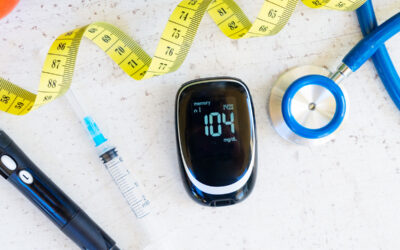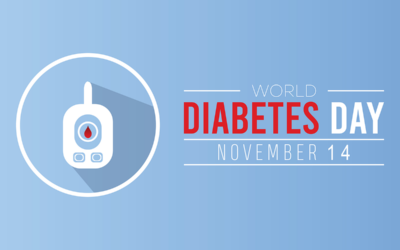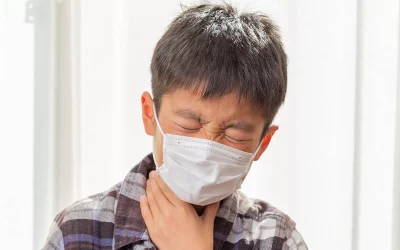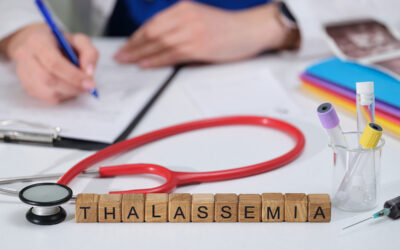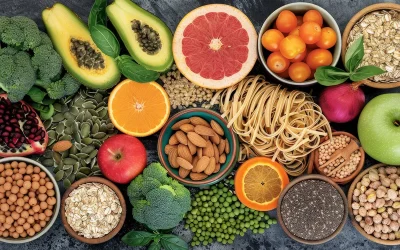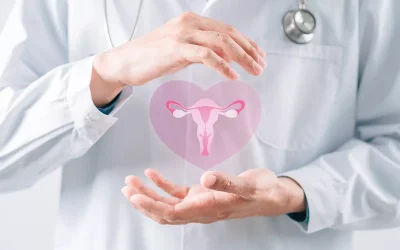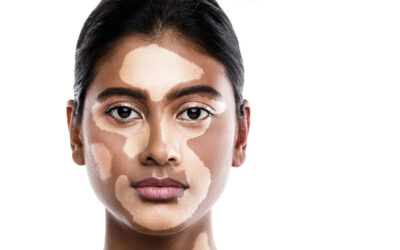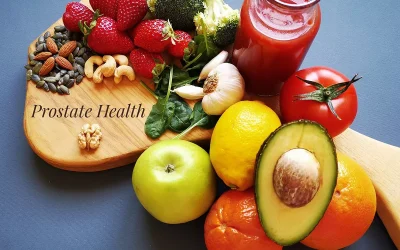Chilblains in Winter: Why Fingers and Toes Swell in the Cold Weather
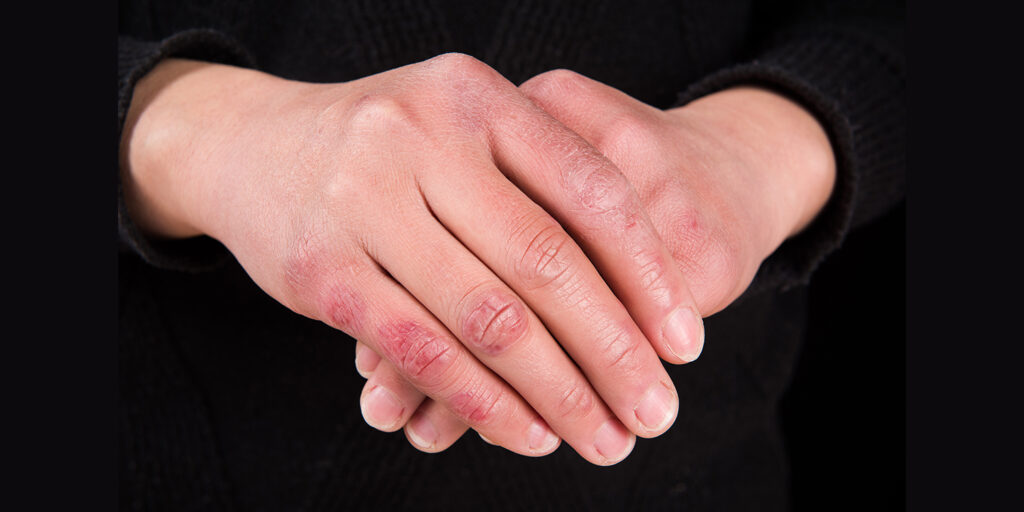
As the temperature drops, many people begin to notice an unusual winter problem – swollen, itchy, or red fingers, often accompanied by pain. While most assume it’s just a seasonal reaction, these symptoms are often caused by chilblains – a condition that occurs when the skin’s small blood vessels overreact to cold temperatures. Chilblains are more than a skin irritation; they reflect how the body responds to sudden temperature changes, especially when warmth follows cold exposure too quickly. For people living in colder regions such as Dehradun, where winters can be harsh and damp, this can become a recurring issue, affecting comfort, mobility, and skin health.
In this article, we will discuss chilblains in detail, covering their causes, symptoms, prevention, and treatment, along with simple ways to effectively manage such winter-related skin problems.
Table of Contents
ToggleWhat are Chilblains and Why Do They Occur?
Chilblains are small, itchy, and painful swellings that develop on the skin after exposure to cold and damp weather. They most commonly affect the fingers, toes, ears, and nose, where blood circulation is naturally slower. The condition occurs when small blood vessels under the skin narrow in response to cold and then expand too quickly when rewarmed. This sudden change causes fluid leakage, inflammation, and visible redness or swelling.
Chilblains are not usually dangerous but can cause significant discomfort and may return each winter if not managed properly. They are more likely to occur in individuals with poor circulation, anaemia, diabetes, or those who spend long hours outdoors in cold, humid conditions. Wearing tight gloves or shoes, exposure to damp environments, or having underlying conditions such as Raynaud’s disease can also increase the risk.
Understanding how cold weather and poor circulation contribute to chilblains is the first step toward prevention and early care.
Common Signs and Symptoms of Chilblains
Chilblains often develop within hours of exposure to cold, particularly when the affected areas are rewarmed too quickly. The condition usually affects the fingers and toes but may also appear on the ears or nose. Here are the most common signs and symptoms to look out for:
- Swelling or puffiness: Fingers or toes may appear enlarged or feel tight.
- Redness or discolouration: Affected skin often turns red, bluish, or purple due to inflammation.
- Itching and burning sensation: The skin may feel irritated or unusually warm after being cold.
- Tenderness or pain: Even light touch can cause discomfort, especially when pressure is applied.
- Blisters or small ulcers: In severe cases, blisters may form, which can break and lead to infection if untreated.
- Dry or cracked skin: Repeated exposure to cold and low humidity may make the skin flaky and sensitive.
Read More: Dry Skin in Winter? Here’s Why It Happens and How to Treat It
If swelling, pain, or discolouration persist beyond a few days, it may indicate complications or another underlying condition that needs medical evaluation.
Who is at Higher Risk of Developing Chilblains
While chilblains can affect anyone exposed to cold, certain individuals are more likely to develop them due to health or environmental factors. Here are some groups more prone to developing chilblains:
- People with poor blood circulation: Reduced blood flow slows down the body’s ability to adapt to temperature changes, increasing the risk of swelling and redness.
- Individuals with diabetes or anaemia: These conditions affect blood vessel function and skin healing, making the skin more vulnerable to cold injury.
- Those with autoimmune or vascular conditions: Diseases such as Raynaud’s phenomenon or lupus can trigger frequent chilblain episodes.
- Underweight individuals: Having less body fat provides less insulation against the cold, increasing sensitivity to low temperatures.
- Outdoor workers or sportspersons: Frequent exposure to cold, damp environments raises the likelihood of developing chilblains.
- People living in cold and humid regions: Areas such as Dehradun often experience long winters that can worsen symptoms when proper protection is not used.
How to Manage and Treat Chilblains on Fingers
Chilblains usually heal on their own within one to three weeks, but proper care can ease discomfort, speed recovery, and prevent infection. Treatment focuses on improving circulation, protecting the skin, and avoiding sudden temperature changes. Here are some simple and effective ways to manage chilblains at home:
- Warm the hands gradually: Gently rewarm cold fingers using body heat or warm (not hot) water. Avoid direct contact with heaters or hot water, as it can worsen inflammation.
- Apply soothing creams: Use mild anti-itch or anti-inflammatory creams to reduce irritation and redness. A doctor may prescribe topical corticosteroids if symptoms are severe.
- Keep the skin clean and dry: Moisture can aggravate swelling and delay healing, so ensure fingers are dried gently after washing.
- Moisturise regularly: Use non-perfumed creams or ointments to prevent dryness and cracking, which can lead to infection.
- Avoid scratching: Scratching can break the skin and increase the risk of infection or scarring.
If the symptoms persist or become painful, medical treatment may include medications that improve blood flow (vasodilators) or address underlying circulatory issues.
Home Remedies to Relieve Chilblains
Mild cases of chilblains can often be managed effectively with home remedies that improve blood circulation and protect the skin from further irritation. These simple practices can complement medical treatment and help prevent recurrence during winter. Here are some home remedies that can provide comfort and relief:
- Gentle massage: Lightly massage hands and feet with warm oil to stimulate circulation and keep the skin supple.
- Lukewarm water soaks: Soaking affected fingers or toes in lukewarm water for 10 to 15 minutes can soothe itching and reduce swelling.
- Wear soft gloves and woollen socks: Natural fabrics help retain warmth while allowing the skin to breathe.
- Eat nutrient-rich foods: Include foods rich in iron, vitamin C, and antioxidants to support circulation and skin repair.
- Stay hydrated: Adequate water intake helps maintain skin elasticity and supports overall vascular health.
While home care can ease discomfort, persistent or recurrent chilblains should be evaluated by a specialist to rule out underlying conditions such as poor circulation or autoimmune disorders.
Prevention Tips: Keep Your Fingers Safe This Winter
Preventing chilblains is largely about protecting the skin and maintaining steady blood circulation during cold weather. With a few consistent habits, it is possible to keep fingers and toes warm, comfortable, and free from winter-related swelling.
Here are some simple preventive measures to follow:
- Dress warmly in layers: Always wear gloves, socks, and insulated clothing when stepping outdoors. Covering extremities helps maintain consistent warmth.
- Avoid sudden temperature changes: Gradually warm hands and feet after coming indoors from the cold to prevent blood vessel shock.
- Stay active: Regular movement improves blood circulation, keeping hands and feet warm naturally.
- Moisturise regularly: Apply gentle, fragrance-free moisturisers to prevent dryness and cracking caused by cold air.
- Avoid smoking: Smoking constricts blood vessels, worsening circulation and increasing the risk of chilblains.
- Maintain indoor warmth: Keep living areas comfortably heated and avoid prolonged exposure to damp conditions.
Possible Complications of Untreated Chilblains
If chilblains are ignored or left untreated, the persistent inflammation and poor blood circulation can lead to complications that affect skin integrity and healing. Here are some potential complications to watch for:
- Skin infection: Cracked or broken skin can allow bacteria to enter, leading to redness, pus, or pain.
- Open sores or ulcers: Severe chilblains can cause blisters that break, leaving open wounds slow to heal.
- Recurrent episodes: Without proper prevention, chilblains may return each winter, especially in those with circulation problems.
- Persistent itching or burning: Inflammation may continue even after visible swelling has subsided.
- Scarring or discolouration: Repeated flare-ups can cause dark patches or rough skin over affected areas.
If symptoms become severe, spread to other areas, or fail to improve within a few weeks, medical evaluation is important to rule out vascular or autoimmune disorders.
Why Choose Graphic Era Hospital for Winter Skin Conditions in Dehradun?
At Graphic Era Hospital, we understand that winter can be especially challenging for those dealing with skin and circulation problems such as chilblains. Cold weather should not come at the cost of comfort or mobility, and that’s why our specialists are here to help you heal, prevent, and protect. Here’s why you can trust Graphic Era Hospital for winter skin conditions including chilblains:
Expert Dermatologists and Vascular Specialists
Our experienced team of dermatologists and vascular experts specialises in diagnosing and treating cold-induced conditions such as chilblains, frostbite, and Raynaud’s phenomenon. We take the time to understand every case and create a treatment plan that suits each patient’s individual needs.
Advanced Diagnostic and Treatment Facilities
With advanced imaging and laboratory support, we accurately assess blood circulation and detect underlying causes such as anaemia, diabetes, or autoimmune disorders. This ensures that treatment goes beyond the surface to address the root of the problem.
Personalised Care and Guidance
From medical therapy to daily care advice, our specialists work closely with each patient to promote healthy circulation and protect the skin throughout the winter. Every plan includes practical tips to prevent recurrence and support long-term recovery.
Compassionate and Patient-Centred Approach
At Graphic Era Hospital, care continues even after the symptoms subside. We guide our patients through every stage of healing, ensuring comfort, confidence, and lasting relief from winter-related discomfort.
If cold weather has made your fingers swell or your skin flare up, don’t ignore it. Reach out to our specialists today, because timely care can make all the difference.
Conclusion
Chilblains may seem like a minor winter irritation, but they are a clear sign that the skin and blood vessels are under stress from the cold. With early recognition, proper care, and preventive habits, the condition can be easily managed and recurrence can be avoided.
At Graphic Era Hospital, our specialists combine medical expertise, advanced diagnostics, and personalised care to help patients recover effectively from winter skin and circulation problems. Whether it’s redness, swelling, or persistent discomfort in the cold, early attention can make a lasting difference.
To consult a dermatologist or vascular specialist at Graphic Era Hospital, call 1800-889-7351.
Frequently Asked Questions (FAQs)
How do you fix chilblains on your fingers?
Mild chilblains usually improve within a few weeks. Warming the hands gradually, applying soothing creams, and keeping the skin dry and moisturised can speed up healing. Severe or recurring cases should be evaluated by a doctor.
Are swollen fingers in cold weather a sign of chilblains?
Yes. Swollen, itchy, or red fingers during winter are often caused by chilblains, which occur due to abnormal blood vessel reactions to cold temperatures.
How can I treat chilblains at home?
Gentle massage, lukewarm water soaks, and wearing warm gloves can relieve discomfort. Avoid direct heat, as it can worsen swelling or cause burns.
What’s the difference between frostbite and chilblains?
Chilblains cause redness, itching, and mild swelling due to cold exposure, while frostbite is a more serious condition where tissues freeze, leading to numbness, blisters, and skin damage.
Can chilblains go away on their own?
Yes. Most cases resolve naturally within one to three weeks, but recurring or severe symptoms need medical evaluation.
How can I prevent swollen fingers during winter?
Keep hands warm and dry, avoid sudden temperature changes, moisturise regularly, and stay active to improve circulation.
Are chilblains common in Dehradun’s cold weather?
Yes. Due to the region’s cold and damp winter climate, chilblains are common in Dehradun, especially among individuals with poor circulation or prolonged cold exposure.
What vitamin deficiency causes chilblains?
Deficiency of vitamins such as Vitamin D, Vitamin B12, and Iron can impair blood circulation and make the skin more prone to cold injuries.
Can exercise help reduce swelling in fingers during winter?
Yes. Regular physical activity improves blood flow, which helps prevent cold-induced swelling and keeps the skin healthy.
By Specialities
- Bariatric Surgery
- Cancer Care
- Cardiology
- Dental
- Dermatology
- Diabetes & Endocrinology
- Endocrinology and Diabetes
- ENT (Ear Nose Throat)
- Eye Care
- Gastroenterology
- Haematology
- Health Care
- Health Tips
- Hematology
- Hepatology
- Internal Medicine
- Mental Health and Behavioural Sciences
- Metabolic
- Neonatology
- Nephrology
- Neurology
- Nutrition & Dietetics
- Obstetrics & Gynaecology
- Oncology
- Ophthalmology
- Orthopaedics
- Paediatric
- Physiotherapy & Rehabilitation
- Plastic and Reconstructive Surgery
- Psychology
- Pulmonology
- Rheumatology
- Spine
- Urology
Recent Posts
- Chilblains in Winter: Why Fingers and Toes Swell in the Cold Weather
- World COPD Day 2025: Understanding COPD Causes, Symptoms, and Prevention
- Understanding Rheumatoid Arthritis: A Guide to Early Detection and Treatment
- Fatty Liver & Indian Diets: The Carbohydrate Connection
- Nutrition for Diabetes: What to Eat and What to Avoid
Need expert medical advice?
Share your details and our healthcare specialists will reach out to assist you.
By proceeding, you acknowledge and agree to our Privacy Policy, Terms of Use, and Disclaimer.



